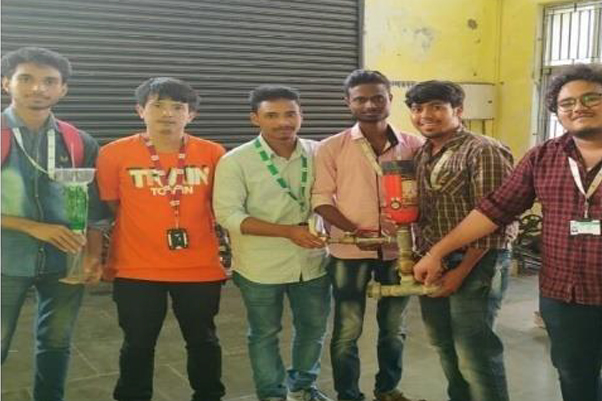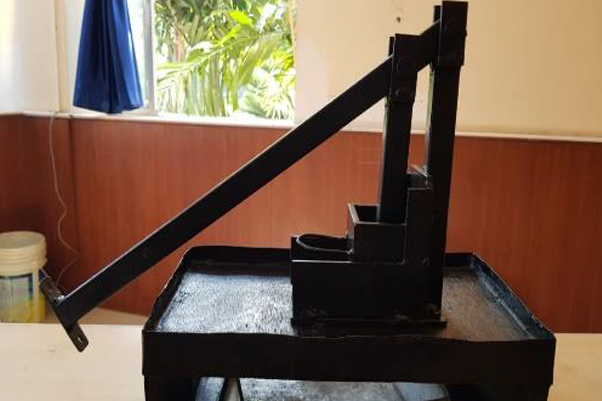Mechanical Engineers play a major role in facilitating the functioning of modern society. For any Mechanical Engineer the main goal is to work in line with the cause to create a better tomorrow. The skills acquired by a Mechanical engineering graduate must benefit the entire society.
Idea to Realisation of Product: From product designers to product manufacturers, Mechanical engineers are competent to work from the very inception of a product development followed by a no. of validity analysis at design and manufacturing phases, till it reaches the consumers. A Mechanical Engineer should be able to employ the two natural resources – materials and energy available to them in an optimum and efficient manner. Each and every need for development must base on the concurrency and congruency with the ideas and thoughts of the entire team.
Problem Solving: Mechanical Engineers are generally well known for their diverse reach to solve nearly any technical problem. The engineer doesn’t have much option to choose the problem of own interest. They should be able to utilise engineering techniques to solve a wide gamut of technical hitches faced by the society. Each and every determination of a scientific inquiry carried out by a Mechanical Engineer should be in direct relevance to the future needs of the society. The prime responsibility of a Mechanical Engineer is to enhance and maintain public safety and welfare. Environmental safety and environmental responsibility being the other prime criterion to be considered.
A Mechanical Engineer should be capable to explain the difference between science and engineering to the society and how can the principles of science be implemented in advancements of engineering. They should be perfect at their professional ethics and towards their legal liabilities. They should develop fundamental understanding of their professional responsibilities. There should be healthy debate between the engineers which naturally arises their integration in application of their methodologies.
At Adamas University the curriculum design is mainly focusing on two specific forms of the infrastructure where Mechanical engineers benefit society. These relate to the connection & supplying of products and services to the society.
The first area to be considered is termed ‘Connect’. Mechanical Engineers link communities together through transport infrastructure. Infrastructure give the vital role for create the society beneficial project with the help of innovative idea. Adamas University is rated the best private university in eastern India and was established with the intension to provide a better infrastructure for creating innovative projects which is used to develop the society. Mechanical Engineering department under this university plays a vital role for creating various low-cost innovative projects which are used to develop the transportation for financially week people. Out of many Projects, I take this opportunity to present few of the most impactful projects till date. Let’s get connected!
1) Air Bike (Guided by the faculty Mrs. Soodipa Chakraborty): -A Compressed air vehicle (CAV) is old concept but it becomes important because of hike in petrol prices and increase in pollution. CAV engine works on compressed air, no mixture of fuel is required. So, construction of engine may be same as conventional but some modification is needed to compensate the air as fuel fact. Fossil fuels (i.e., petroleum, diesel, natural gas and coal) which meet most of the world’s energy demand today is being depleted rapidly. Also, their combustion products are causing global problems, such as the greenhouse effect, ozone layer depletion acid rains and pollution which are posing great danger for environment and eventually for the total life on planet.
These factors are leading automobile manufactures to develop cars fuelled by alternatives energies. Obviously, these engines are pollution free. Air used is freely available in atmosphere. A Compressed-air engine is a pneumatic actuator that creates useful work by compressed air. A compressed-air vehicle is powered by an air engine, using compressed air, which is stored in a tank. Instead of mixing fuel with air and burning it in the engine to drive pistons with hot expanding gases, compressed air vehicles (CAV) use the expansion of compressed air to drive their pistons.

2) Engine Oil Condition Monitoring System (Guided by the faculty Mr. Sudip Chakraborty): – In recent days, Automobiles that make easy transportation of goods play an important role in the economic growth of any country. Transportation necessitates the continuous running of a vehicle without any unwanted break downs. The engine is considered as the heart of an
automobile. Vehicle break on may happen due to unexpected or premature failures of some critical parts of an engine. Critical parts of engines are mainly cylinder, piston, crankshaft, timing belt, and clutch. The failure of the above components mainly depends on the lubricating performance of engine oil. Now a day’s oil is being usually replaced based on periodic maintenance schedule designed by vehicle manufacturers. This schedule is framed based on kilometre coverages of vehicles or time period. In this practice, there is the possibility of
being oil replaced before completing its life. Even during service work, technicians in the workshop do not follow any method to know the actual condition of oil before replacing it. There is a need for actual driving habits, traffic conditions, engine speed, and load conditions, road conditions (gradients) to predict the condition up to which oil was being utilized. Thus, the above is helpful in the prediction of the remaining life of engine oil. This can be done only by monitoring the properties of engine oil continuously during vehicle running. The properties of any lubricating oil are the viscosity, Viscosity index, density, Specific weight, Specific volume, specific gravity, surface tension, and capillarity. Since viscosity place, a vital role in lubrication oil condition can be judged by monitoring it continuously. The monitoring of viscosity helps to identify the actual condition of the oil. This is done by a system that receives signal for the temperature of oil, converts the same into viscosity units and displays it. Therefore, vehicle users can identify the exact replacement of engine oil.

The second strand is ‘Supply’. Water, gas, electricity and sewage infrastructure – again, developed and built by engineers. These systems don’t just make a contribution to society; they sustain society by meeting the most basic everyday needs of all its members, raising living standards for all, reducing hardship and poverty, and helping society to achieve its potential. In this context Adamas University students have contributed to create many innovative projects.
3) Hydraulic Ram Pump (Guided by the faculty Mr. Soumya Ghosh): – In today’s world water is of a great concern to the human beings because we can’t survive without it. Hydraulic ram can be one of the solutions to this problem of a mankind. Mostly in India where villages are
situated far away from the water source it is not possible to the people living there to go miles away carrying away the buckets of water. Especially at those places this pump has a much utility because it is cheap, without electricity and easy to maintain. As it requires no external energy other than kinetic energy of flowing water it can be considered as a pump which uses Renewable energy. Though the pump is in use since long time, it is not seen in common forms for lots of its performance limitations. This type of pump is truly a
blessing to the rural areas, farmers and middle class for its zero-running cost.

4) Design & Fabrication of Low-Cost Briquetting Machine (Guided by the faculty Mr. Ranjan Kumar): – Briquette is made from organic waste like- paper/ cardboard waste, waste wood etc. It’s made by recycling of organic waste. Reuses of this waste makes our environment clean and fresh. Pollution is minimum compare to coal while burning the briquette. Raw materials are mainly organic or waste materials so, raw materials cost is very cheap and easily available. This briquette can be used for house hold purpose, tea shop and other places as a replacement of coal. Purpose of fabricating this machine to serve village area people where they mainly use coal. They
can easily make these briquette through the machine and get benefited from it.

We believe in learning by creating! Bringing all these various points together, it is a truth accepted universally that Mechanical Engineers play the vital role in development of a society and that without them, it couldn’t function effectively.







